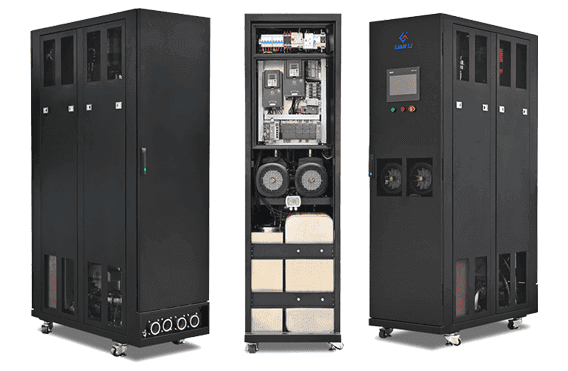In an era where Bitcoin’s price hovers around $100,000, the allure of mining cryptocurrency from your living room has never been stronger. Imagine turning your spare closet into a mini data center, churning out digital gold while you binge-watch your favorite shows. But is home crypto mining a realistic path to passive income, or just a power-hungry pipe dream? As of November 2025, the landscape has evolved—post-halving efficiency demands smarter setups, but with dropping hardware prices and innovative devices, it’s more accessible than ever.
This guide dives deep into cryptocurrency mining from home, spotlighting the best home Bitcoin mining devices. We’ll cover everything from setup basics to profitability breakdowns, ensuring you’re armed with eye-opening insights and actionable steps. Whether you’re a tech-savvy hobbyist or a curious newbie eyeing financial freedom, read on to discover if mining Bitcoin at home can light up your wallet—without burning a hole in your electric bill.
What Is Crypto Mining from Home, and Why Bitcoin?
Cryptocurrency mining is the backbone of networks like Bitcoin, where powerful computers solve complex puzzles to validate transactions and secure the blockchain. In return, miners earn newly minted coins plus fees—a process called proof-of-work.
Home mining means doing this on a small scale, using consumer-grade hardware in your garage or basement. Bitcoin remains the king for home miners due to its liquidity and value stability, but it’s no longer the wild west of 2010. Today’s setups rely on Application-Specific Integrated Circuits (ASICs), specialized chips optimized for Bitcoin’s SHA-256 algorithm. Forget gaming rigs; GPUs are obsolete for BTC.
Why go home-only? It’s empowering: control your operation, learn blockchain tech, and potentially offset costs with solar power. But reality bites—network difficulty has skyrocketed to 90+ trillion, making solo mining a lottery. Most join pools like F2Pool or Slush Pool for steady payouts.
Is Home Bitcoin Mining Still Profitable in 2025?
Short answer: Yes, but with caveats. Bitcoin mining remains lucrative globally, with the network minting $20 million daily in rewards. For home setups, profitability hinges on three pillars: hardware efficiency, electricity rates, and BTC price.
In 2025, the post-2024 halving world sees block rewards at 3.125 BTC, down from 6.25. Yet, with BTC at $103,000+, a top-tier rig can net $5–$15 daily after costs—if your power is under $0.10/kWh. U.S. averages hit $0.12/kWh, tipping many setups into the red for casual miners. Industrial farms dominate, but home miners thrive in low-cost regions like Texas (thanks to flare gas) or with renewables.
A sobering stat: Mining one BTC at home could guzzle over $100,000 in electricity alone at average U.S. rates. That’s why hobbyists often break even in 6–18 months, then profit. Tools like WhatToMine or ASIC Miner Value let you crunch numbers in real-time. Bottom line: If you’re in it for fun or education, it’s viable. For riches? Scale smart or seek cheap power.
Top Home Bitcoin Mining Devices for 2025: Picks for Every Budget
Gone are the days of deafening fans and skyscraper power bills. 2025’s home Bitcoin mining devices prioritize efficiency, quiet operation, and immersion cooling for apartments. Here’s our curated list of the best, based on hashrate (computing power in terahashes/sec, TH/s), efficiency (watts per TH), and price. All are ASIC-based for BTC.
1. Bitmain Antminer S21 Pro (Best Overall for Balanced Home Use)
- Hashrate: 234 TH/s
- Power Draw: 3,510W
- Efficiency: 15 J/TH
- Price: ~$3,500 (down from $5,000 in 2024)
- Why It Rocks: This beast delivers pro-level performance without industrial noise (under 75dB). Pair it with hydro-cooling for silent runs. Daily profit: $10–$12 at $0.10/kWh and $100k BTC.
- Best For: Serious hobbyists with dedicated space.
2. MicroBT Whatsminer M60S (Efficiency King for Low-Power Homes)
- Hashrate: 186 TH/s
- Power Draw: 3,429W
- Efficiency: 18.5 J/TH
- Price: ~$2,800
- Why It Rocks: Superior heat management keeps temps below 70°C, ideal for garages. It’s 20% more efficient than predecessors, slashing bills. Expect $8–$10 daily net.
- Best For: Energy-conscious miners in hot climates.
3. Canaan Avalon Q (Budget-Friendly Entry-Level Option)
- Hashrate: 90 TH/s
- Power Draw: 1,670W
- Efficiency: 18.6 J/TH
- Price: ~$1,200
- Why It Rocks: Compact and whisper-quiet (50dB), it’s perfect for apartments. Users on Reddit rave about its ROI under a year with cheap power. Gross daily: $4–$6.
- Best For: Beginners testing the waters.
4. Bitaxe Gamma (Hobbyist Gem for Ultra-Home Setups)
- Hashrate: 1.2 TH/s (scalable with multiples)
- Power Draw: 15W
- Efficiency: 12.5 J/TH
- Price: ~$150 per unit
- Why It Rocks: Open-source and tiny—like a Raspberry Pi on steroids. Stack 10 for 12 TH/s without spiking your breaker. Ideal for learning; profits are modest ($0.50/day per unit) but fun.
- Best For: Tinkerers and eco-miners.
5. Goldshell Byte (Quiet All-Rounder for Small Spaces)
- Hashrate: 4 TH/s
- Power Draw: 400W
- Efficiency: 100 J/TH (less efficient but low absolute power)
- Price: ~$500
- Why It Rocks: Plug-and-play with built-in Wi-Fi; runs cooler than most. Great for side hustles, yielding $1–$2 daily.
- Best For: Urban dwellers avoiding noise complaints.
Pro Tip: Buy from reputable sellers like CryptoMinerBros or Bitmain’s site to dodge fakes. Check ASIC Miner Value for live profitability rankings.
Step-by-Step: How to Set Up Your Home Bitcoin Mining Rig in 2025
Ready to dive in? Setting up takes 2–4 hours. Here’s a foolproof guide.
- Assess Your Space and Power: Need a cool, ventilated area (under 30°C ambient). Check your breaker—most rigs need 20A circuits. Use a PDU for safe distribution.
- Gather Essentials:
- ASIC miner (from above).
- Power Supply Unit (PSU): 80+ Gold rated, matching wattage (e.g., 1,600W for Avalon Q).
- Cooling: Fans or immersion fluid (~$200 extra).
- Ethernet cable and router.
- Wallet: Electrum or hardware like Ledger for secure payouts.
- Software: CGMiner or Braiins OS (free, user-friendly).
- Hardware Assembly:
- Unbox and connect PSU to miner via PCIe risers if needed.
- Mount in rack or shelf; add fans for airflow.
- Plug into wall—use a surge protector!
- Software Configuration:
- Download firmware from manufacturer.
- Join a pool: Sign up at ViaBTC, input stratum URL (e.g., stratum+tcp://pool.viabtc.com:3333).
- Configure miner IP via web interface; enter wallet address.
- Hit start—monitor via app for hashrate and temps.
- Test and Optimize: Run for 24 hours. Use Hive OS for remote tweaks. Aim for 99% uptime.
Total startup cost: $1,500–$5,000, excluding electricity.
Crunching the Numbers: Costs, Profits, and ROI for Home Mining
Let’s get real with math. Assume a mid-tier setup like the Whatsminer M60S ($2,800 investment), $0.12/kWh electricity, and $103k BTC.
- Daily Revenue: ~$9 gross (based on current difficulty).
- Electricity Cost: 3,429W = 82kWh/day x $0.12 = $9.84.
- Net Daily: -$0.84 (break-even at $0.11/kWh).
- Monthly: -$25 loss, but HODL rewards—BTC appreciation could flip it positive in months.
- ROI Timeline: 12–24 months with price upside; faster in low-cost areas.
For the Bitaxe stack (10 units, $1,500 total): $5 gross vs. $0.36 power = $4.64 net daily. Pure profit playground.
Factor in maintenance ($100/year) and taxes (mining income is taxable). Use CoinLedger for IRS compliance. Environmentally? Opt for green energy to offset Bitcoin’s 175 TWh annual footprint.
Pro Tips for Thriving in Home Crypto Mining
- Slash Power Bills: Go solar (subsidies via IRA) or mine off-peak.
- Scale Gradually: Start small, add rigs as profits roll in.
- Stay Secure: Use VPNs; beware phishing in pools.
- Diversify: Mine altcoins like Kaspa on the side for variety.
- Community Hack: Join r/BitcoinMining for troubleshooting.
Wrapping Up: Mine Your Way to Crypto Independence?
Home Bitcoin mining in 2025 isn’t a get-rich-quick scheme—it’s a calculated bet on tech, energy, and market tides. With devices like the Antminer S21 Pro democratizing access, anyone can dip a toe (or rig) into the pool. If your electricity is cheap and curiosity high, the rewards—financial and educational—outweigh the hum of fans.
Ready to power up? Calculate your setup on WhatToMine today, and who knows? Your home could be the next mining hotspot. What’s stopping you—noise, cost, or just the unknown? Drop a comment below; let’s mine the discussion.
FAQs About Crypto Mining From home
1. What is crypto mining from home and how does it work?
Crypto mining from home refers to using personal computers or specialized mining rigs to verify blockchain transactions and earn cryptocurrency rewards. Home miners typically join mining pools to increase their chances of consistent payouts. With the right equipment, electricity setup, and cooling system, anyone can participate in mining without operating a large industrial facility.
2. Is cryptocurrency mining from home still profitable in 2025?
Profitability for cryptocurrency mining from home depends on several factors, including the price of the coin, mining difficulty, hardware efficiency, and local electricity rates. While industrial farms have economies of scale, many hobbyists use energy-efficient ASICs or immersion cooling setups to mine profitably from home.
3. What are the best home Bitcoin mining devices for beginners?
The best home Bitcoin mining devices for beginners are compact, energy-efficient ASIC miners such as the Antminer S21 Hydro or Whatsminer M60S. These models deliver high hash rates with lower noise and power consumption, making them ideal for residential environments where space and sound levels matter.





